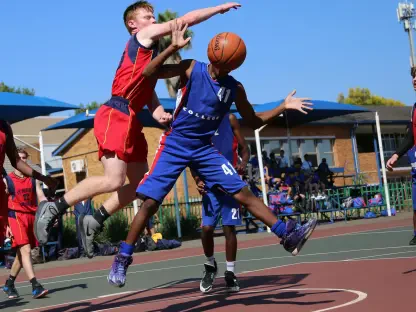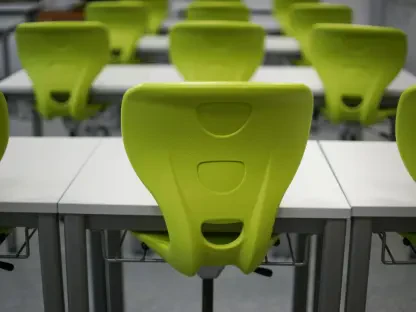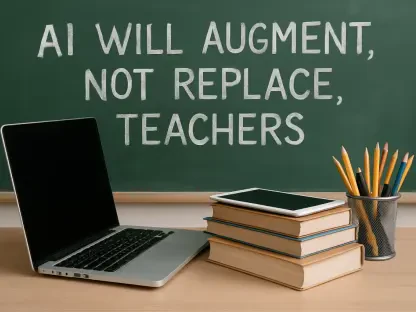Across the United States, K-12 education systems are grappling with an escalating crisis as severe weather events like wildfires, hurricanes, and extreme heat disrupt both school operations and student learning in unprecedented ways. These natural disasters, once thought to be regional anomalies, have evolved into a systemic challenge, impacting schools far beyond traditional high-risk zones. A comprehensive report by NWEA, a leading K-12 assessment organization, released on the 20th anniversary of Hurricane Katrina, sheds light on the profound toll these events take on school finances, academic progress, and emotional well-being. The urgency of the situation is exemplified by cases like Palisades Charter High School in California, where wildfires displaced 3,000 students across over 100 ZIP codes in Los Angeles, forcing a temporary relocation to a converted department store. Such disruptions highlight the critical need for proactive planning to safeguard education against the growing threat of climate-related challenges.
Rising Challenges from Natural Disasters
Expanding Scope of Weather Threats
The frequency and geographic reach of severe weather events have surged, posing a significant risk to schools nationwide. According to data from the National Centers for Environmental Information, 27 weather disasters in 2024 caused over $1 billion in damages, following a staggering 28 in the prior year. This alarming trend, documented by organizations like Undaunted K12, shows thousands of school days lost over the past six academic years, affecting regions previously considered immune to such crises. No longer confined to coastal or wildfire-prone areas, these events now threaten educational continuity across diverse landscapes, challenging school districts to rethink preparedness. The NWEA report emphasizes that this expanding vulnerability demands a shift in how schools allocate resources and plan for interruptions, as reactive measures alone cannot address the scale of disruption. With climate patterns shifting, the impact on education is becoming a national concern, urging policymakers and administrators to prioritize resilience in the face of unpredictable threats.
Financial Strain on Educational Systems
School districts face immense financial pressure as they navigate the aftermath of severe weather, balancing immediate repair costs with long-term infrastructure needs. The case of Palisades Charter High School illustrates this burden, as the institution incurred significant expenses relocating to a makeshift facility after wildfires ravaged its campus. Beyond such emergency costs, the broader state of school facilities—rated a dismal “D+” by the American Society of Civil Engineers with an average building age of 49 years—exacerbates the problem. Upgrading aging HVAC systems to combat rising temperatures or reinforcing structures against storms requires substantial capital investment, often beyond the means of underfunded districts. This chronic lack of resources creates a cycle of vulnerability, where schools remain ill-equipped to protect students or maintain operations during crises. The financial toll not only hampers recovery but also diverts funds from educational programs, further impacting learning outcomes.
Impacts on Students and Educators
Academic Setbacks from Disruptions
Severe weather events inflict significant instructional loss, with lasting repercussions for student achievement across affected regions. Research from NWEA reveals that for every day a school closes due to a disaster like a hurricane or wildfire, an average of 3.6 days of learning is lost, based on historical data from major events. The extent of this academic setback varies widely, often depending on the duration of the closure and the availability of recovery resources, leaving under-resourced districts particularly disadvantaged. Schools in economically challenged areas struggle to provide alternative learning options or catch-up programs, widening existing achievement gaps. This disruption to educational continuity underscores the need for innovative solutions, such as remote learning frameworks or emergency curricula, to minimize the impact of closures. Without targeted interventions, the cumulative effect of lost instructional time risks derailing long-term academic progress for countless students.
Emotional and Physical Toll on School Communities
The emotional and physical consequences of severe weather extend far beyond classroom interruptions, deeply affecting students and educators alike. Anxiety, depression, and post-traumatic stress are common among students exposed to disasters, while educators often experience burnout from managing these crises alongside regular duties. Physical health risks, including exposure to smoke from wildfires or mold following floods, further compound the challenges, particularly in socially vulnerable communities. Data highlights a troubling disparity, with Black and Hispanic students facing test score declines at three times the rate of their White peers due to factors like extreme heat, reflecting systemic inequities. These combined stressors disrupt the sense of safety and stability essential for learning, making mental health support a critical component of disaster recovery. Addressing these non-academic impacts requires a holistic approach, integrating counseling and health services into school emergency plans to support affected populations.
Building Resilience for Future Crises
Strategies to Mitigate Learning Loss
In the wake of recurring weather disruptions, schools face a pressing need to develop strategies that curb instructional losses and sustain academic progress. Reflecting on past challenges, many districts experimented with hybrid learning models during closures, leveraging technology to maintain engagement despite physical displacement. NWEA’s insights suggest that preemptive planning, such as stockpiling digital resources or training staff for remote instruction, proved effective in minimizing the 3.6-day learning loss per closure day. Collaboration with local governments to secure temporary learning spaces also emerged as a practical solution in areas hit hardest by disasters. These efforts, though resource-intensive, demonstrated that proactive measures could bridge educational gaps when traditional schooling was interrupted. By prioritizing adaptable frameworks, schools lay the groundwork for continuity, ensuring students retain access to education even under adverse conditions.
Investing in Infrastructure and Equity
Looking back, addressing the financial and equity challenges posed by severe weather required a committed focus on infrastructure upgrades and targeted support for vulnerable communities. Districts that invested in climate-resilient facilities, such as modern HVAC systems to combat extreme heat, found themselves better equipped to maintain safe learning environments. Concurrently, initiatives to address disparities—evidenced by the disproportionate impact on Black and Hispanic students—gained traction through partnerships with community organizations to provide additional resources. Policymakers recognized that fortifying aging school buildings, previously graded a “D+” by engineers, was non-negotiable for long-term stability. These investments, paired with policies to ensure equitable recovery funding, offered a blueprint for reducing the systemic burdens of weather crises. Moving forward, sustaining this momentum through federal and state support remains essential to protect education from future environmental threats.









